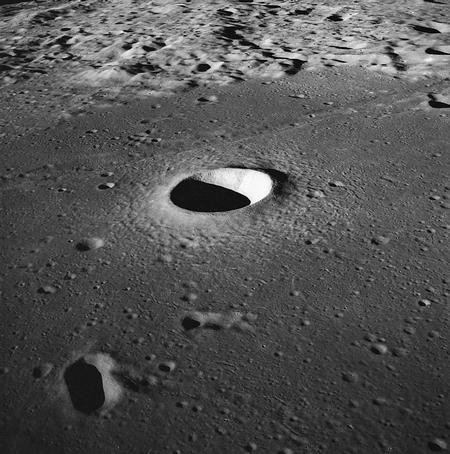GAM 2018 Blog
- Published: Thursday, April 19 2018 09:00
By Tilly Evans
Crater CountingThe Moon has been there for as long as we can remember, but how do we find out how old it really is? The age of the Moon’s surface can be estimated by counting its craters. These craters are from impacts from asteroids or comets that have smashed into the Moon’s surface. Younger surfaces will have less impacts and therefore less craters whereas older surfaces would have more using the same logic. There is, however, a limit to the aging of these surfaces using this process as there is a limited amount of space for impacts to hit. Once the surface is completely covered in craters it’s hard to tell how long it has been that way and more impacts land in old craters. |
Crater on the Moon. Credit: NASA |
|
Variation in the number of craters formed on the Moon's surface during different periods of time shows that the cratering rate has not been constant but has decreased dramatically from pre-Imbrian times (over 4,000 million years ago) to present. The most dramatic decline occurred ~4 billion years ago. Most impacts occurred during the Hadean epoch (4-4.5 billion years ago). Size vs quantityIf the number of craters is plotted against size the resulting graph shows that there are actually three different aged surfaces on the Moon. When astronauts went to the Moon they collected samples from each of these regions for absolute dating of the rocks in these areas, which helps geologists to piece together the Moon’s history. The calibration can then be applied to crater counting on Mars, Mercury, etc. to calculate the age of their surfaces. Impact Simulator ActivityThe size and depth of the Moons craters can tell us a lot about the impacting object. The density of the object as well as its speed and impacting angle can be calculated. Once the trajectory and speed are known, its possible to work out the origin of the impacting object. If the same object hit the Earth and Moon with the same density, size, trajectory and speed they would have very different outcomes due to the difference in gravity. You can find out how these factors affect the size of the craters produced using the impact simulator produced as a part of Down2Earth by the Faulkes Telescope Project. |
|
|
|
|
|
Tilly is this year's Global Astronomy Month blog coordinator. She is an undergraduate student in the School of Physics and Astronomy at Cardiff University. During the summer break in 2017, she undertook a placement in Cardiff University with Faulkes Telescope producing educational resources for schools.
|
 |










